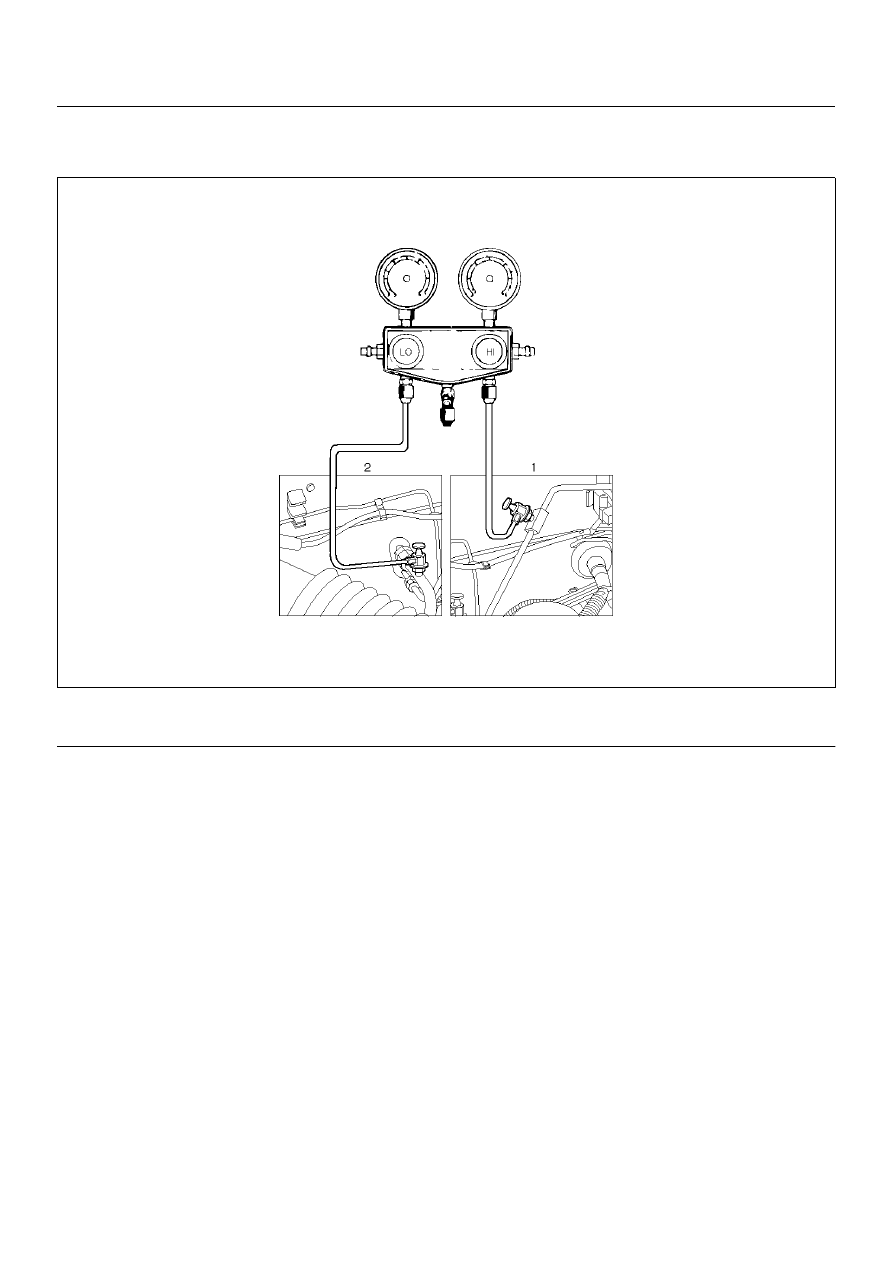Opel Frontera UE. Manual - part 17

1A–40
HEATING, VENTILATION AND AIR CONDITIONING (HVAC)
Connect The Manifold Gauge
Low-pressure hose (LOW) — Suction side
High pressure hose (HI) — Discharge side
901RX060
EndOFCallout
Legend
(1) High Side
(2) Low Side